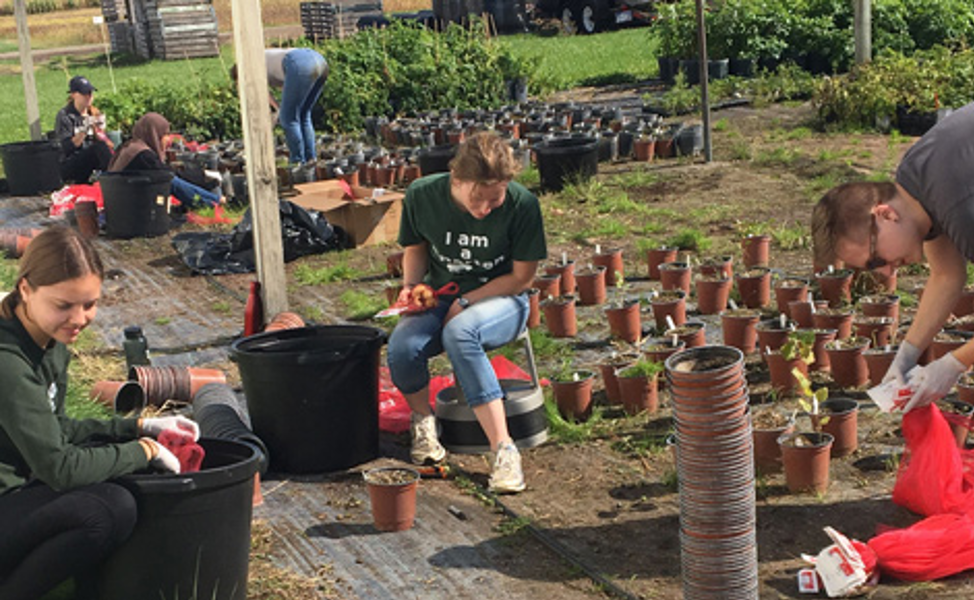Several MSU faculty just received a four-year, $2.5M grant from the National Science Foundation (NSF), to study the physiology of potatoes, which, like humans, have internal circadian rhythms linked to the earth's 24-hour oscillation of light. Climate change, however, is affecting how potatoes' internal clocks regulate themselves; this study hopes to develop a better understanding of a variety of potato circadian rhythms in northern regions in order to better understand potato domestication.
Plant biologist Eva Farre', MSU Department of Plant Biology and co-principal investigator Dr. Robin Buell, MSU Foundation Professor of plant biology and director of the Plant Resilience Institute reached out to CREATE for STEM's Dr. David Stroupe to participate in the proposal in order to bring a science teaching perspective to the work. “In this project, four future teachers will have the exciting opportunity to be immersed in Dr. Farré’s laboratory, help conduct potato research and then teach an undergraduate science course.” This is important in that K-12 students are learning science by doing science; teachers need real experiences in doing scientific research so that they can bring those skills to their students.
Dr. Farre', Dr. Buell, and Dr. Stroupe will be joined by other MSU co-PI's: David Douches and Addie Thompson in the Department of Plant, Soil and Microbial Sciences, and Arjun Krishnan, who holds joint appointments in the Department of Computational Mathematics, Science and Engineering and the Department of Biochemistry and Molecular Biology.
For more on the research project, read the full story from the College of Natural Science.
Click here to find out more about this grant and the NSF MCA-PGR.
*Banner image: The domestication of potato is associated with faster circadian clocks. Experiments in the lab of MSU plant scientist Eva Farré help quantify the characteristics of the circadian clock of different potato strains, with the aim of identifying the genes responsible. Courtesy photo



